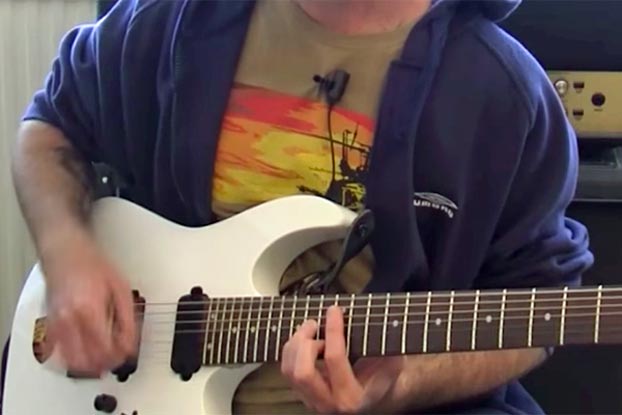How Alternate Picking is Just "Small Strumming"
There's more than one way to physically approach alternate picking.

- There's more than one way to physically approach alternate picking. There is no right or wrong way.
- If there is a "right" way, then it’s whatever method allows you to play what you want to for as long as you need to, without causing any unwanted side effects.
There are people who display only a rotation of the wrist, people who use wrist and a bit of arm movement, people who seem to pick from the elbow and a small minority of people who use the thumb and forefinger motion known as circular picking and in many cases a combination of all of several of those mechanics.
Regardless of the method used, nobody can deny that they all produce results. It’s finding out which one works that can take time, but it can be a fun journey.
One possible method involves wrist and forearm rotation. Many people watch guitarists demonstrating how to pick, and they usually see the up/down movement of the wrist, observed from the front by the viewer.
It might look like a strict up/down movement similar to a clock hand going from 2 o'clock to 4 o'clock, but this is an illusion due to the angle in which we’re seeing it—and due to the fact that when people demonstrate it slowly, they do mimic this deliberate action I've just described.
This strictly lateral motion of the wrist would not hold up as soon as you go above anything faster than a slow wave. Hold your hand out now and try it. You'll see how the hand won't stay on a lateral axis as soon as you try and do it quickly. This is because your wrist joint wants to rotate, along with your forearm. This is true whether your hand bends away from you (in a motion demonstrated in the video), known as wrist flexion or whether your wrist is bent back toward you, known as wrist extension.
Either way, trying to move it side to side will result in a rotational motion, not the up/down clock face motion that many people believe picking should be.
With some players, like Paul Gilbert, the role of the forearm is hidden, as only the wrist seems to display the movement; and if you anchor onto the guitar with your fingers, the mechanics are disguised even more. One of the best techniques for getting a sense of a loose wrist in flexion is chord strumming.
When's the last time you saw a badass R&B or disco guitarist play with a stiff arm? Go to YouTube and check out how Nile Rodgers uses wrist flexion to unleash smooth but tight-as-you-like 16th note pulses with total accuracy.
As I said at the beginning of this lesson, there is no one way to pick. But if you’ve never considered using strumming to springboard your picking technique, give it a go and see what you think.
Get The Pick Newsletter
All the latest guitar news, interviews, lessons, reviews, deals and more, direct to your inbox!









![Joe Bonamassa [left] wears a deep blue suit and polka-dotted shirt and plays his green refin Strat; the late Irish blues legend Rory Gallagher [right] screams and inflicts some punishment on his heavily worn number one Stratocaster.](https://cdn.mos.cms.futurecdn.net/cw28h7UBcTVfTLs7p7eiLe.jpg)
